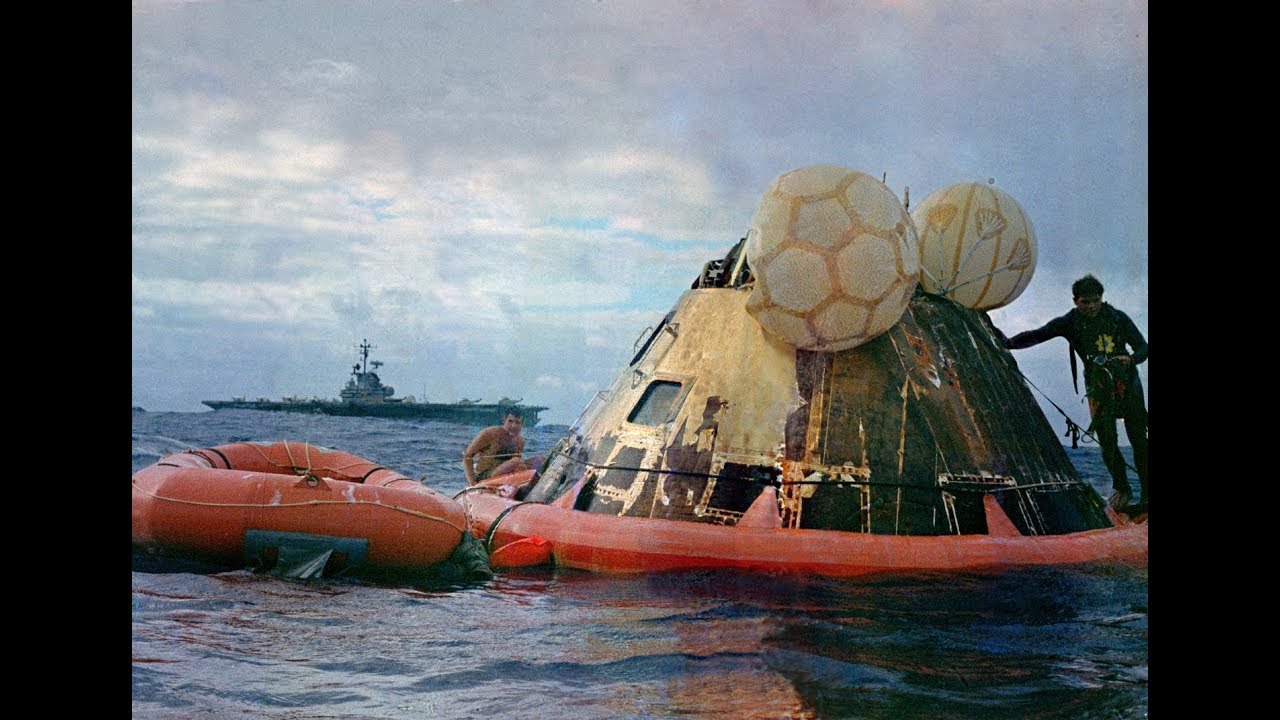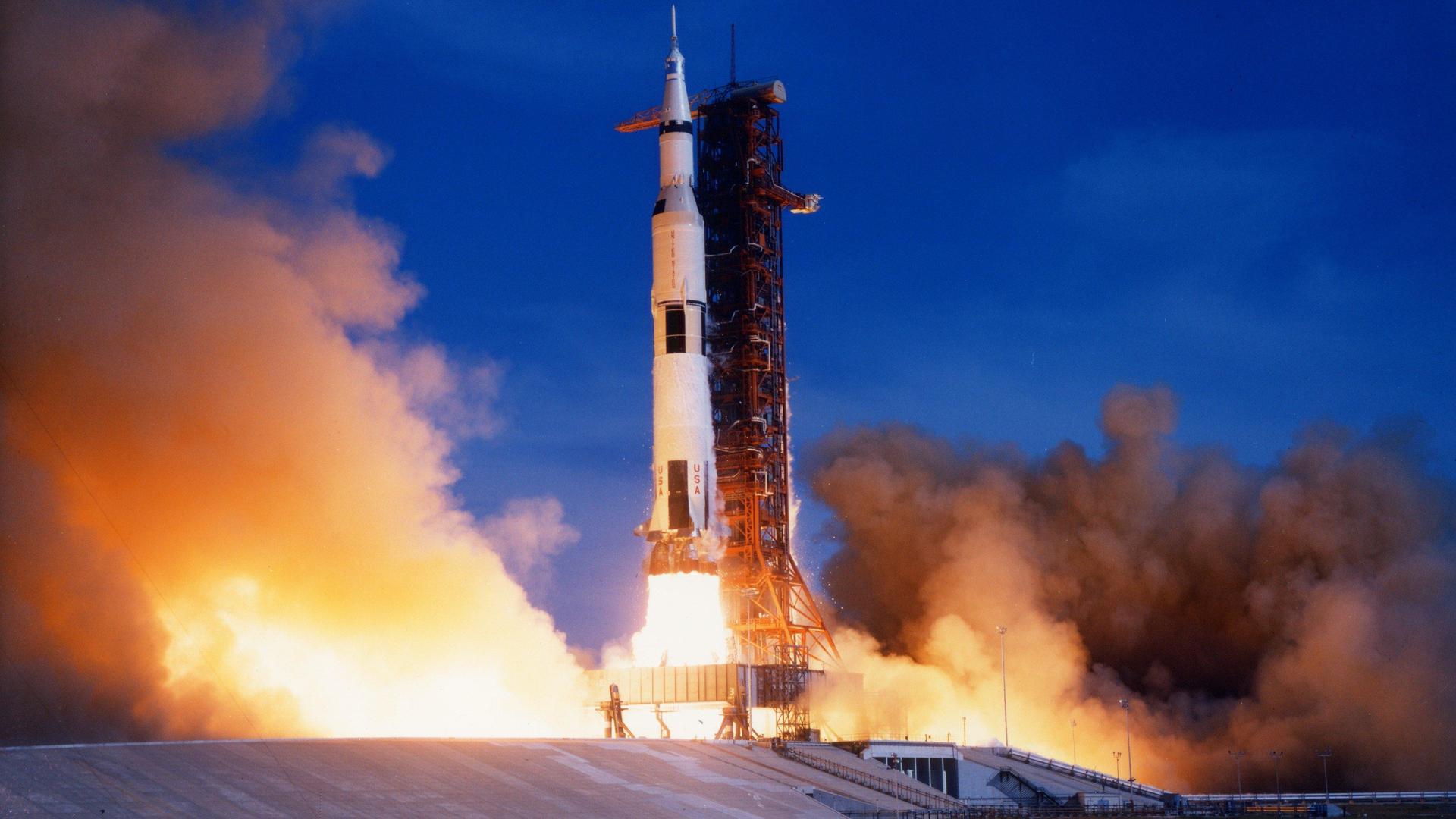
Spacecraft Landing
Splashdown - Apollo 11th (50th Anni.)
Pacific Ocean Saturn V | Apollo 11
After completing the monumental Apollo 11 Moon landing, Neil Armstrong, Buzz Aldrin and Michael Collins safely splashed back into the Pacific Ocean on July 24, 1969.
Related Information
Saturn V | Apollo 11
National Aeronautics and Space Administration | United States of AmericaKennedy Space Center, FL, USA
July 16, 1969, 1:32 p.m.
Status: Launch Successful
Mission:
Apollo 11 was commanded by Neil Armstrong , Command Module Pilot Michael Collins and Lunar Module Pilot Edwin "Buzz" E. Aldrin. The Mission was to complete the goal that President John F. Kennedy set on May 25, 1961 to land a man on the moon and return the crew back to Earth. On July 20,1969 Neil Armstrong and Buzz Aldrin landed there Lunar Module on the sea of tranquility this marked the first time a human has set foot upon another celestial body.
Lunar OrbitFalcon 9
Transporter 15 (Dedicated SSO Rideshare)
Space Launch Complex 4E - Vandenberg SFB, CA, USADedicated rideshare flight to a sun-synchronous orbit with dozens of small microsatellites and nanosatellites for commercial and government customers.
Soyuz 2.1a
Soyuz MS-28
31/6 - Baikonur Cosmodrome, Republic of KazakhstanSoyuz MS-28 will carry three cosmonauts and one astronaut to the International Space Station aboard the Soyuz spacecraft from the Baikonur Cosmodrome…
Nuri
CAS500-3
LC-2 - Naro Space Center, South KoreaCAS500-3 is a South Korean Earth observation satellites to be used by the Ministry of Science and ICT for space technology verification and space sci…
Angara 1.2
Kosmos (Unknown Payload)
35/1 - Plesetsk Cosmodrome, Russian FederationNote: Payload identity and Cosmos series numbering not confirmed. Unknown Payload(s) for the Russian military.
Long March 2
Shenzhou 22
Launch Area 4 (SLS-1 / 921) - Jiuquan Satellite Launch Center, People's Republic of ChinaShenzhou 22 (Chinese: 神舟二十二号) will be the 22nd flight of the Shenzhou program. The spacecraft will be launched without crew to replace Shenzhou 20 th…
Falcon 9
Starlink Group 11-30
Space Launch Complex 4E - Vandenberg SFB, CA, USAA batch of 28 satellites for the Starlink mega-constellation - SpaceX's project for space-based Internet communication system.
Falcon 9
Starlink Group 6-79
Space Launch Complex 40 - Cape Canaveral SFS, FL, USAA batch of 29 satellites for the Starlink mega-constellation - SpaceX's project for space-based Internet communication system.
Long March 3
TJSW-21
Launch Complex 2 (LC-2) - Xichang Satellite Launch Center, People's Republic of ChinaChinese classified satellite claimed to be for communication technology test purposes. Actual mission not known.
Falcon 9
Starlink Group 6-78
Launch Complex 39A - Kennedy Space Center, FL, USAA batch of 29 satellites for the Starlink mega-constellation - SpaceX's project for space-based Internet communication system.
Electron
Follow My Speed (BlackSky Gen-3 3)
Rocket Lab Launch Complex 1A - Rocket Lab Launch Complex 1, Mahia Peninsula, New ZealandNote: Payload and customer identities were not publicly announced. 3rd of the BlackSky Gen-3 high resolution Earth-imaging satellites.


